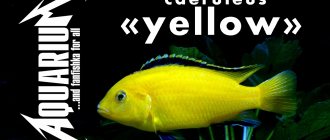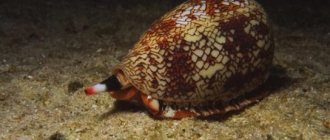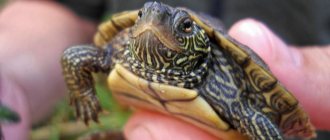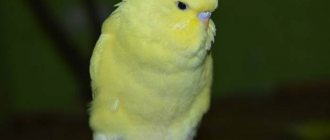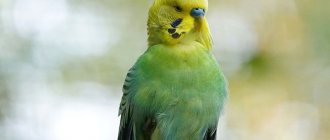Any aquarium requires regular care and cleaning. To ensure that glass remains transparent and plants and decorations do not lose their attractiveness, they must be systematically cleaned of plaque and algae. Aquarium cleaner fish will help to cope with the problem of contamination of the elements of an artificial reservoir. They often do not have a bright appearance, but they make it much easier for the owner to care for an artificial pond and allow you to get rid of algae without the use of chemicals.
Why are aquarium cleaners needed?
Cleaning the dirt that has accumulated in the aquarium is necessary not only for aesthetic purposes. Accumulated waste and secretions serve as an environment for the development of pathogenic microbes and will cause illness and death for your fish.
To prevent this from happening, you need to have cleaners in your indoor pond. This is a fairly wide range of fish, mollusks and crustaceans that will help cleanse the internal ecosystem and maintain it in normal condition.
For us, work is a way of life for them.
Aquarium cleaners, of course, do not clean out of request or out of a sense of duty. They are simply reproducing thousands of years of behavior shaped by natural selection.
- Herbivorous organisms participate in eating algae - in nature they also clean water spaces, it’s just that the volume of a natural pond or river is so large that this work remains unnoticeable.
- Sometimes an aquarist may also need predators - to get rid of some unwanted inhabitants, which are troublesome and not completely safe to remove by chemical means or physical removal.
All animal helpers can be classified into three different groups: molluscs, fish and arthropods.
Viviparous
Viviparous species are fish that give birth to young fish rather than lay eggs. Representatives of these families will help clean the aquarium from unicellular algae. In terms of efficiency, they are incomparable to other transparent tank cleaners, but in combination with snails and shrimp they can easily maintain cleanliness.
Popular representatives of cleaners among viviparous fish are:
- Guppy. Size 1.5–3 cm. Life expectancy 1–5 years. Color - from white to black. A distinctive feature is the large fan-shaped tail fin. There are more than 100 varieties.
- Sword bearers. Length 4–6 cm. Live 3–6 years. There are a lot of color and pattern options. A structural feature is an elongated tail fin in the shape of a sword.
- Black molly - 6–10 cm. Lifespan 3–5 years. The body is in the shape of a compressed ellipse. Color: matte black.
- Pecilia - 4–6 cm. They live in captivity for 3–5 years. The color is pale yellow, with several large spots on the sides.
All representatives of viviparous fish are hardy and unpretentious to the conditions of detention. Omnivorous.
Popular aquarium cleaner fish
Pterygoplichthus
- one of the most popular large aquarium fish, not only among those who are trying to actively fight algae in the aquarium. The main limitation on its content is the volume of the aquarium, preferably from 150 liters. While the fish is not yet large, it is quite hardworking and is very good at scraping not only the glass in the aquarium, but also decorations and stones. As the pteryg grows and matures, it becomes increasingly lazier, and at some point cleaning the aquarium will become a fairly infrequent process.
Ancistrus
Also very popular is the cleaner fish. Ancistrus are loved by aquarists due to the fact that they can live in almost any aquarium, starting from 20 liters. Of course, 20 liters is a limit, but still a very realistic option. Since the fish is not big, they can take in quantity. But on the other hand, we do not recommend keeping many individuals, especially males, in a limited volume, because conflicts are possible. In our opinion, this fish is more hardworking than Pterygoplichthus, but due to the characteristics of its sucker, it may not be as effective.
Crossocheilus
This fish is less popular in the world of aquarists, but no less valuable. It is believed that Crossocheilus is the best at cleaning the aquarium from flip flops and black beards. We even indicated this method as one of the options for how to get rid of black beard in an aquarium. Many people recommend planting several fish to achieve better results, but we do not recommend this, as in a confined space the fish can be very aggressive towards each other. Also, you need to understand that if the Vietnamese has already grown in the aquarium, then it will be almost impossible for the fish to destroy it all.
From the editor: Shchipovka
Cleaner fish are, of course, not a panacea. If you haven’t looked after your aquarium for a long time, haven’t cleaned the glass, and, having bought fish, decided that they will do all the dirty work for you, then we can assure you that this will not happen. Fish can only be auxiliary tools in terms of combating algae and growths at an early stage of their appearance, but you should not put everything on their shoulders.
Who benefits in the aquarium?
Every aquarist, sooner or later, has this question. First, we purchase unpretentious fish that are easy to keep. We are gradually becoming interested in more complex fish, more interesting and rare. We often choose fish based on the beauty of their color, shape, and behavior. But, there comes a time when we are looking for useful fish, even if not so bright and interesting in behavior, but which make it easier for us to take care of our aquarium world, which clean the aquarium, are its orderlies and bring unconditional benefits!
I also had such a moment. And I am interested not only in healthy fish, but also in healthy shrimp and shellfish. In my three aquariums, different in terms of parameters and population, different types of algae live very well. It was the fight against algae, without the use of aquarium chemicals, that prompted me to start this search. I propose not to evaluate the degree of usefulness of certain inhabitants, but simply to create a list of hydrobionts that bring obvious benefits in a freshwater aquarium. I think this list can be expanded with your help.
So, let's begin. The following useful fish immediately come to mind:
Siamese algae eaters (SAE) and their relatives
Otocinclus
Ancistrus
A lot has been written about these fish; almost every aquarist has representatives of these species. Their benefits have long been tested and proven!
Mollies
The fish are aquarium cleaners of the poeciliaceae family, ovoviviparous. The body is oblong, narrowed laterally. The fins are mostly short, the tail is rounded. Not picky about living conditions, resistant to diseases. Viviparity has made mollies very competitive.
Dimensions 4–10 cm. Live in aquariums for up to 4–5 years. The character is non-aggressive. Behavior is active. Diet type: omnivore. They can reproduce both in a separate tank and in a common container.
Selective processing has led to the emergence of a fairly wide variety of these fish. Differences:
- According to body shape.
- Color.
- Shape and size of fins.
4 main varieties of mollies:
- Sphenops. Small fins.
- Latipina. Developed dorsal fin and forked tail.
- Velifera. Large dorsal fin.
- Freestyle. Brightly colored fins.
In its pure form, only the Sphenops species is found in aquariums - the black mollies. Selection varieties, due to their structural features, are not so popular because they require special maintenance conditions.
What kind of fish clean the aquarium?
Many types of fish from time to time use algae that appears in the aquarium as additional feeding. However, to quickly cleanse a pond of dirt, you should purchase aquatic organisms that specialize in eating algae plaque. The list of the best cleaners includes the following names:
- Siamese algae eater;
- Ancistrus catfish;
- catfish otocinclus;
- king catfish;
- brocade catfish;
- sturisoma;
- loricaria;
- Gyrinocheilus;
- guppy;
- mollies.
Most of the species on this list have a special mouth structure that allows them to scrape plaque from flat surfaces and thereby effectively clean them of dirt.
Siamese algae eater
This aquarium cleaner fish has a medium-sized elongated body, silver in color with a longitudinal black stripe stretching from the mouth to the caudal fin. They contain algae eaters in a volume of 100 liters with a water temperature of 23-26°C, pH 5.5-8 and dH 5-20. Fish love to rest on the wide leaves of plants, as well as large stones and snags; At the same time, there should be enough free space in the aquarium for swimming. Algae eaters do not affect higher plants, but can eat duckweed and Java moss.
Ancistrus catfish
Ancistrus are medium-sized catfish with an elongated body of a dark brown color with light specks. Males have growths on their heads. The mouth is transformed into a sucker, allowing catfish to attach to vertical surfaces and scrape plaque from them. Ancistrus are peaceful fish that get along well in a community aquarium. They are kept in a volume of 80 liters with a water temperature of 20-28°C, pH 6-7.5 and dH up to 20. It is advisable to place driftwood in the reservoir, since cellulose is necessary for catfish for normal digestion.
Catfish otocinclus
Otocinclus are universal aquarium cleaners. The body size of the fish does not exceed 5 cm; like other Loricariids, the mouth is transformed into a sucker, and the body is covered with bony plates. Catfish are kept in groups of 6 or more in aquariums with a volume of 40 liters or more. The water temperature is maintained at 22-27°C, pH 6-7, dH 5-19. Otocinclus are sensitive to nitrogenous compounds, so the content of ammonia and nitrites should be equal to 0, and nitrates should not exceed 10 mg/l. Driftwood and plants with wide leaves are placed in the aquarium.
Royal catfish
The king catfish, or black-lined panak, is a fish from the Loricariidae family, up to 40 cm in size. The color is brown with black wavy stripes, the head is large, the mouth has the shape of a suction cup. Representatives of the species are kept in large communal aquariums with shelters and snags. The optimal water temperature is 22-28°C, pH 6.5-7.5, dH 5-20. Good filtration and aeration are necessary. To feed the catfish, they are given plant foods and special algae tablets, as well as bloodworms and sinking dry food.
Brocade catfish
Brocade catfish is a representative of the Loricariidae family, reaching a length of 55 cm. The fish has large fan-shaped fins and a leopard-like coloring of round dark spots on a brown background. Brocade catfish are kept in volumes of 300 liters with a water temperature of 24-30°C and pH 6.5-7.5. These aquarium cleaner fish are non-aggressive and suitable for community aquariums. Snags and shelters of suitable size are placed in the pond; high-quality filtration and aeration are necessary. Somas are most active at night.
Sturisoma
Sturisoma is an elegant fish with an elongated body, a thin tail and elongated fins, belonging to the Loricariidae family. Sturis is kept in groups of 2-3 individuals in volumes of 150 liters with a water temperature of 22-28°C, pH 6-7.5 and dH 5-15. Fish are sensitive to water quality, so the content of nitrogen compounds in it should be minimal; good filtration and aeration are necessary. Sturisomes are peaceful and suitable for a community aquarium. Natural driftwood, flat stones and broad-leaved plants are placed in the pond.
Loricaria
Loricaria are catfish ranging in size from 10 to 30 cm, characterized by a long and thin caudal peduncle, as well as elongated fin rays ending in spines. They keep loricaria singly, in pairs or in groups in common aquariums. The water temperature is maintained at 22-25°C, pH 6-7.5, dH 3-15. Loricarias are sensitive to water quality, so good filtration and regular changes are necessary. Snags, shelters and plants with wide leaves are placed in the pond. Pisces are active at night and do not like bright light.
Gyrinocheilus
Girinocheilus are fish that clean the aquarium of algae most effectively at a young age, and as they get older, they prefer to switch to artificial food. These are catfish that grow up to 15 cm; the mouth is transformed into a suction cup. Natural color is brown with dark spots; The golden-orange morph is more common in aquariums. Girinocheilus are kept singly in volumes of 100 liters with a water temperature of 22-28°C, pH 6-6.5, dH 3-12. Fish love clean water, so the tank is equipped with a filter and a compressor.
Guppy
Guppies are small viviparous fish that are undemanding in terms of keeping conditions and can quickly adapt to changing water parameters. Breeders have developed many morphs of this species, differing from each other in color and fin shape. Guppies are kept in schools in volumes of 15 liters or more with a water temperature of 22-25°C, pH 6-7.5 and dH from 10. The species is peaceful and compatible with most aquarium fish. Guppies are omnivores and require regular feeding with dry, live or frozen foods of plant and animal origin.
Mollies
Mollies are small viviparous fish. Color varies depending on the morph and can include black, white, orange, gold and red. Mollies are kept in groups with a predominance of females in a volume of 50 liters with a water temperature of 24-27 ° C, pH 7.5-8 and dH 11-25. These fish are peaceful and suitable for a community aquarium. Mollies are omnivores and love food of animal origin, but for normal development they need plant food and supplements containing algae, in particular spirulina.
Carp
Popular representatives of orderlies from the carp fish family are gyrinocheil species and the Siamese algae eater (Crossocheilus). Labio and frenatus are less popular.
All fish have an aggressive character. It is necessary to select neighbors for carp fish with special attention, otherwise they will start fights among themselves. Undemanding to food and habitat.
Gyrinocheilaceae
Girinocheylidae come from the carp family. Fish of this species eat plant matter both from the bottom surfaces and from the walls of the container. Considered one of the best algae fighters. They do not require special conditions of detention. In captivity they grow no more than 15 cm. The body is elongated. Reproduction is possible only in specialized nurseries. For maintenance they require additional feeding with plant foods.
Hyrinocheil fish, which clean the aquarium, have the following characteristics:
- Life expectancy in captivity is at least 10 years.
- Behavior is closer to the aggressively territorial type.
- Daytime lifestyle.
- The structural feature is that the lips are suction-shaped.
Fish and snails: enemies or friends?
Fish and snails: enemies or friends?
The relevance of the gastronomic symbiosis of these aquarium inhabitants is not so interesting for experienced aquarists, who will say with full confidence: “Well, what’s not clear here! Fish eat snails, and snails eat dead fish... that's all." However, these processes are not clear to a novice or young aquarist. And sometimes, when he sees how the ampularia “bites” into a dead fish, he enters into a kind of stupor with the question - what to do about it?
Let's discard the lyrics and get down to business!
First, let’s make a reservation that an aquarium with snails certainly looks more natural and beautiful. But you can easily do without them. Aquarium snails are the orderlies of the aquarium (they clean the walls, decor, plants, etc.), but at the same time they need harder water (which is due to the need to obtain building material for the shell). There are snails that are relatively whimsical (Ampularia), and there are snails like the multi-Tatar Igo - tenacious and all-captivating (Coils). In general, there are advantages and there are, I would say not disadvantages, but nuances.
Now let's look at the question: do snails eat fish, can they do it at all!
Editorial: Rasbora heteromorpha
All snails are scavengers; they are mildly called “aquarium orderlies” - but this does not change the essence. As soon as the aquarium fish has died, and sometimes, while it is still fluttering, a “crowd” of snails attacks the lifeless body. Thus, this is a natural process provided by Mother Nature, and you should not be afraid of it. Another question is what to do about it? Dead fish, and especially those that have died from disease, must be removed from the aquarium without waiting for the end of the snail feast. Otherwise, you risk spreading the infection throughout the entire aquarium.
Snails will not eat live and healthy aquarium fish! For this to happen, snails need a pair of jet engines.
In turn, the fish do not remain in debt! Many aquarium fish are not averse to eating snails, for some it is an exquisite delicacy, for example, gourami, many cichlids, the GOLDFISH family and even shrimp are not averse to tasting ground snails.
photo Coil snails photo Ampularia
So, if you see that your ampoule is being taken out, it is better to set it aside or give it back to the store. They won't let her live anyway.
It is worth noting that many aquarists, on the contrary, breed snails (Katushki) to feed fish, thereby saving on food, adding variety to the diet and at the same time knowing that live food is not contagious.
fanfishka.ru>
Siamese algae eaters
The Siamese algae-eater catfish has a gray-brown color with a black longitudinal line along the body. It is one of the few fish that eat red algae (flip-flop and blackbeard).
The body is elongated, 8–10 cm long. In captivity, Crossocheilus can live up to 10 years. Omnivores, actively eat unicellular algae, including red varieties. They do not pose a danger to other inhabitants, but actively defend their territory. Reproduction requires special equipment.
Main differences from a real Siamese:
- They do not destroy algae in large quantities; they switch to aquarium mosses.
- The dark stripe is poorly visible on the head and is absent on the caudal fin.
- They have 2 pairs of whiskers.
Share your experience using Siamese algae eaters to clean your aquarium.
Harmless antiseptics
Such solutions can be purchased at pet stores. One of the advantages is the speed of getting rid of the disease. You can use Sidex, it is absolutely safe for aquarium inhabitants. According to reviews, he can’t always overcome it so well, so many people use AlgaeFix. But its disadvantage is that crustaceans are not friendly with it, and they die when used. A more expensive but faster method may be the use of Aldehyde + CO2; prevention lasts no more than a week. But remember: before using any drug, be sure to read its instructions and contraindications!
Otocinclus
Otocinclus catfish do an excellent job of removing grass deposits on the walls and decorations of the aquarium. They grow 3–6 cm long. In captivity they live 3–6 years. The differences between the species are only in size and color options. General characteristics:
- On the side there is a continuous or interrupted wide line of dark shades.
- A large dark spot on the caudal fin closer to the body.
- Pack behavior.
Pros of content:
- Undemanding to living conditions.
- Omnivorous.
- Non-aggressive behavior.
- Small size.
- They quickly eat unicellular algae.
Popular aquarium species of otocinclus:
- Ordinary.
- Mottled.
- Maria.
- Macrurus.
Ancistrus
The common ancistrus catfish perfectly cleans the surface of the aquarium from green deposits. The drop-shaped body is covered with keratinized plates. On the front part of the body there are bone growths in the form of horns. The structure of the mouth includes hard plates, which are natural scrapers. Various colors are possible - yellow, olive, gray, white.
The fish grow up to 10 cm. They live in aquariums for 5–8 years. The character is peaceful, conflicts are possible only between representatives of the same species. Ancistrus feed only on plants. Maintenance is not difficult. They reproduce independently in aquariums.
Acroluxes in the aquarium
Acroluxes in an aquarium photo
Small snails up to 5 mm in size do not cause any harm, except for the stress that their presence causes to the perfectionist aquarist =) If there are few snails, there is no need to fight them, if there are many of them, as mentioned above, you are overfeeding the fish, reconsider your approach to feeding your pets. If you are convinced that the best method of fighting snails is Helena, purchase several predatory Helena snails and very soon Acroluxes will disappear from your aquarium. You can also use chemicals, but be careful if you keep other, more “noble” snails: ampularia, neretina, orange rabbits, etc. they will also suffer from the chemicals. You can also set up traps for snails, for example, they crawl to eat a piece of cucumber, carrot, or banana skin. All you have to do in the morning is take out the treat and throw the snails off it. This statement is true for all snails except predatory ones.
Pterygoplichts or brocade catfish
Pterygoplichthus belongs to the genus of loricariid catfish. A beautiful fish of a dark, brown color, it destroys grassy plaque and algae in large quantities. It is not suitable for every aquarist, as it grows up to 50 cm. The body is oblong, widens towards the head, the upper part is covered with horny plates.
Distinctive features:
- The nostrils project upward.
- High dorsal fin.
- On the top of the head there is a bone growth in the form of a ridge.
View this post on Instagram
A very interesting, yet useful fish that will help in cleaning your aquarium. Not so whimsical, keeping it in an aquarium does not require much care, the fish is resistant to many diseases. The brocade catfish, although a rather large fish, is perfect for beginners and will delight you in the aquarium for a very long time! ⏺ brocade ⏺ stuck ⏺ pteryk ⏺…….. what other names do you know that apply to this catfish? Shall we check?
A post shared by ZooMix (@zoomix_opt.ru) on Feb 22, 2022 at 1:57am PST
2 brocade catfish can keep containers of 1–2 cubic meters clean. Lifespan in captivity is 8–15 years. Reproduction in aquariums is not possible. Behavior is moderately aggressive.
Aquarium sticks
Cleaner fish are sometimes essential for aquariums. If owners do not want to have rather simple guppies or mollies, then they can opt for catfish. He has a rather interesting suction cup-shaped mouth. The body consists of a kind of scales, which is otherwise called chain mail. Thanks to the fins located on the chest, this fish can swim against a powerful current. In addition, the tail of the aquarium stickfish is no less powerful.
Sturisoma
These aquarium cleaning fish belong to the chain catfish family. The body is oblong, flattened. The caudal fin is 1.5 times longer than the body.
Characteristics:
- The dorsal fin is sickle-shaped.
- The caudal fin has the outline of a two-pronged fork.
- Dark brown side stripe from tail to eye level.
Sturisomes grow up to 20–30 cm. Their lifespan in aquariums is 6–9 years. Absolutely not aggressive. The complexity of the content is basic. The volume of the breeding tank is from 120–150 liters. Activity occurs at night. Omnivorous.
Varieties of sturisom:
- Golden.
- Yellow.
- Festivum.
- Frenatus.
- Lyra.
- Black-snouted.
Do you like catfish from the chainmail family?
Loricaria
Family: Loricariid catfish. A distinctive feature is the head growths in the form of tree roots. The habits and features of keeping are similar to Pterygoplichthus and Ancistrus. Size 20–25 cm. Life expectancy in captivity 7–11 years. Based on their feeding method, they are classified as phytophages (vegetarians). Aquarium volume - from 110 liters.
There are more than 30 species of loricariid catfish. The most popular:
- Ordinary.
- Peruvian.
- Royal.
Panak or king catfish
The king catfish belongs to the loricariid family. The body is grayish-brown, covered with longitudinal stripes of dark colors. Grows up to 35 cm. In captivity, lives 9–16 years. Content difficulty is easy. Omnivorous. The character is moderately aggressive, especially towards related species. For the habitat of 1 individual, a tank of 180–200 liters is required.
There are 5 known varieties of royal catfish, differing mainly in body colors, shades, and direction of stripes:
- Tapajos - golden-linear.
- Tocantins - lines are located at an angle of 40-50 degrees from the head to the fins.
- Watermelon – red eyes, black lines.
- Xingu - pink and green lines.
- Olive – olive body, black lines.
Loricariid chain catfish
Loricariid catfish are considered one of the best destroyers of harmful algae. The size of representatives of the chainmail family depends on the variety of the individual and can vary from 6 to 60 cm. When choosing one of the representatives of the loricariids as your assistant, you need to take into account what size the adult individual will be.
Chain catfish are omnivores. They live 7–18 years. Aggression towards representatives of other species is rarely shown, but intraspecific conflicts and competition are often present. Reproduction of these representatives in home aquariums is impossible, as it requires the creation of certain conditions.
It is recommended to select the volume of the aquarium based on the size of one adult individual. If you decide to get a loricarian chain catfish, for one fish you will need a tank with a capacity of 80–250 liters with enhanced oxygen saturation.
Breeding
Under favorable conditions, sticky fish can spawn on their own. If we are talking about targeted breeding, you need to prepare a spacious spawning tank (from 40 liters) with a filter and an aerator. A couple of breeders are placed in it: the female must be larger than the male so that he does not kill her. The water temperature is increased by 2 degrees, a lot of protein is introduced into the diet, and the water is changed more often than usual. Females lay eggs in a secluded place, such as a tube. After successful spawning, it is placed in a separate jar. The male is removed after the offspring hatch.
Sevellia lined
Sevellia belongs to the Balitoridae family, the genus is flat-finned. A very interesting fish in shape, vaguely reminiscent of stingrays in appearance. The body is flattened, the caudal fin is turned parallel to the bottom surface.
Adults reach 5–6.5 cm. They live in captivity for 4–6 years. The character is absolutely not aggressive. Sevellias are demanding on the purity of water; their maintenance requires enhanced filtration and oxygen saturation. One individual requires a tank volume of 60-70 liters. Omnivorous. Higher plants are not eaten. Reproduction does not require special conditions from the owner.
Chaetostoma
Catfish belong to the chainmail family, genus Chaetostoma. 48 species are known. In the aquarium hobby, 2 types of cleaner fish are most widespread:
- Formosa, or striped bulldog. The difference is a diamond-shaped pattern, reminiscent of chain mail. Due to the flat end of the head, it received the nickname “bulldog”. Length 7–10 cm. Lifespan 4–7 years. Mixed food. Non-aggressive. The conditions of detention are similar to those of Chaetostoma milesi. Aquarium volume 80 liters minimum.
- Milesi - spotted chaetostoma. The main difference is the dark spotted color. Size 10–15 cm. Lives 6–8 years. Diet type: omnivorous. The character is peaceful. Necessary conditions of detention are saturation of water with oxygen and active filtration. Tank volume from 100 l.
Shrimp fighting algae
Shrimp are the best at cleaning the entire water area and surface of the tank from algae. But there are a few things to consider when choosing how to clean your aquarium:
- You cannot use shrimp in aquariums with predatory fish, or you will have to constantly replenish their population.
- Depending on the size, a fairly large flock is required for cleaning at the rate of 1–2 individuals per 1 liter of volume.
Pros:
- Small individuals will be able to clean the most inaccessible corners and crevices of the tank.
- They not only clean the surfaces, but also filter the water.
- Medium and large individuals loosen shallow soils, removing dead remains and food particles from them.
- They are good for cleaning the leaves and stems of aquarium plants from filamentous algae.
- The most preferred sizes of arthropods are 2–3 cm. One specimen filters 8–10 liters.
The most popular varieties:
- Neocaridins - 1–2 cm. Lifespan 1.5–3 years. Progenitor of cherry shrimp. The small size does not allow this species to pass large volumes of liquid. One individual - 0.5 liters. Neocaridins reproduce quickly and without much effort on the part of the owner.
- Amano - 3–6 cm. They live up to 1–3 years. Capable of filtering large volumes of water. 1-2 individuals - for 80-10 liters. They do not tolerate changing aquarium habitats well. They do not reproduce in fresh water.
- Cherry - 1.5–3 cm. Life expectancy up to 1.5 years. Easily adapts to a new tank. A fairly large volume is cleaned. One arthropod - for 8–10 liters. They reproduce without creating special conditions.
What do you think is more effective - one or two large shrimp or several dozen small ones?
Sea Horse
This interesting and cute species of fish is very attractive to both experienced and novice aquarists. It got its name because of its resemblance to a horse. It has a peculiar characteristic head, a tail that helps to stay on some kind of support, and a fairly large belly. The seahorse's natural habitat is the coral reefs of the Caribbean Sea. The length of its body barely reaches 1.5 centimeters.
To grow and breed a skate, you must provide it with the proper conditions. First of all, the aquarium must contain a sufficient amount of algae that serves as food for it. In addition, there must be driftwood at the bottom, to which it will cling with its tail.
Snails fighting algae
Gastropods are excellent aquarium cleaners. The main advantage of snails is their ability to process absolutely any contaminants that may appear in the aquarium:
- Leftover food.
- Waste products of other inhabitants.
- Dying parts of vegetation.
- Plaque from the walls of the aquarium, decorative elements and equipment.
- Film from the water surface.
- Dead remains of the inhabitants.
The behavior of some varieties serves as an index of cleanliness in the container.
Disadvantages of using snails:
- Low rate of destruction of unicellular algal colonies.
- Rapid, uncontrolled population growth.
- When breeding, eggs are left on cleaned surfaces.
- Excretion of a large amount of own waste products.
Types of snails suitable for cleaning freshwater aquariums:
- Theodoxus - 2 cm. The shell is round in shape with various patterns. It begins to eat up aquarium plants only if there is no grassy coating on the stones and walls of the container.
- Septaria (turtle) - up to 3 cm. Flat shell. It feeds only on single-celled algal fouling. Does not eat cultivated flora.
- Ampularia - grows up to 10 cm. The shape of the shell is spiral, the colors are bright. When there is a lack of food, it eats plants. Predatory fish pose a threat to this species of snail.
- Javan Corbicula (golden bivalve) is a mollusk up to 2 cm in size. Quickly filters the water in the aquarium. 1–2 individuals are enough to clean 50–80 liters. Reproduces 2 times a year. Burying into the ground, it can damage the root system of plants.
- Helena - grows no more than 2 cm. The shell has the shape of a cone. Likes to burrow into the ground. It is used to control populations of other snails, as it feeds on living and dead individuals. Predator.
And also Neretina snails:
- Tiger - 2.5 cm. Round shell with zigzag lines of orange and brown color.
- Zebra - 3.5 cm. The color of the shell is light brown, dirty green with dark stripes. The body is gray or brick in color.
- Horned - 1.4–2 cm. On the rounded shell there are 1–2 pairs of horn-like processes. Color: light yellow, dirty yellow.
- Red dotted - up to 2 cm. The shell is orange in shades with black dots arranged in a row.
- Olive - 1.5–2 cm. Dark olive color with frequently spaced longitudinal lines of dark color.
- Spiked - 1.5–1.8 cm. The shape of the shell is flattened with rows of growths similar to spikes.
What do water snails eat?
Leonid Yarmolinsky
Most water snails are omnivores with a bias toward herbivory. They feed on all kinds of fouling (bacterial and algae film on the surface of objects, organic dendrite (silt, organic particles settled to the bottom), animal corpses, aquatic vegetation. There are also predators, such as the freshwater Anentome helena. When kept in captivity, snails can be fed with some slave food (good Sinking food is suitable for herbivorous fish (plecostomus and other “sucker catfish”). In addition, snails can be supplemented with vegetables (lettuce, pumpkin, cucumber, scalded nettle), but such bait must be immersed in water for 12-24 hours, and then changed , so as not to rot and spoil the water. It is convenient to give such bait “strung” on a fishing line or a plastic fork (in order for the treat to sink to the bottom, you can tie a small pebble) In aquariums with fish and plants, additional bait for snails is most often not needed. If the snails are kept in very soft water, then calcium bait (a piece of sepia or chalk for birds) may be required. When keeping snails in captivity, you need to take into account that copper in any form (including in the form of salts) is very poisonous for them, so In such aquariums and equipment, you cannot use wires or tubes made of copper, brass, bronze, etc., as well as preparations containing copper salts.
